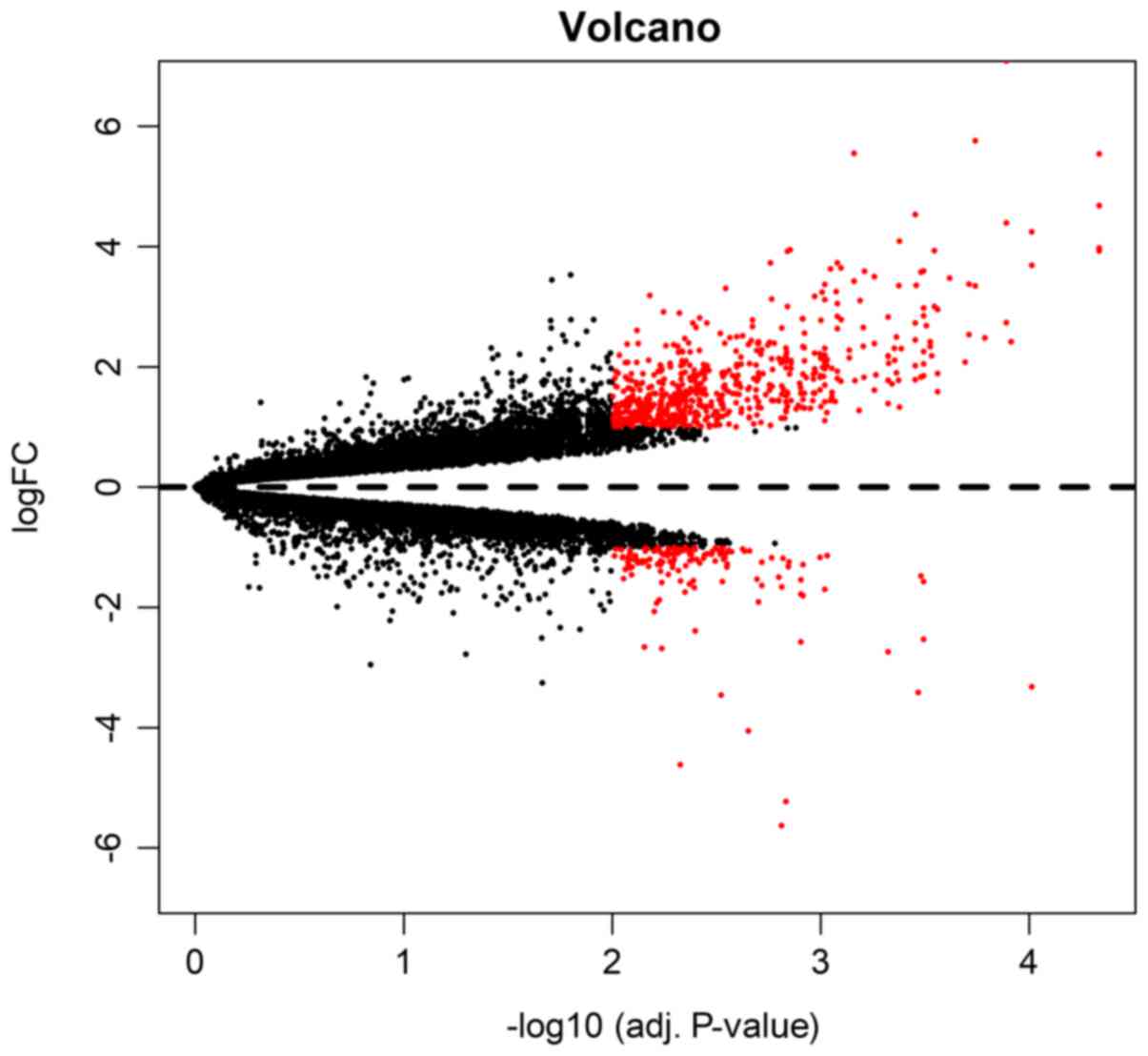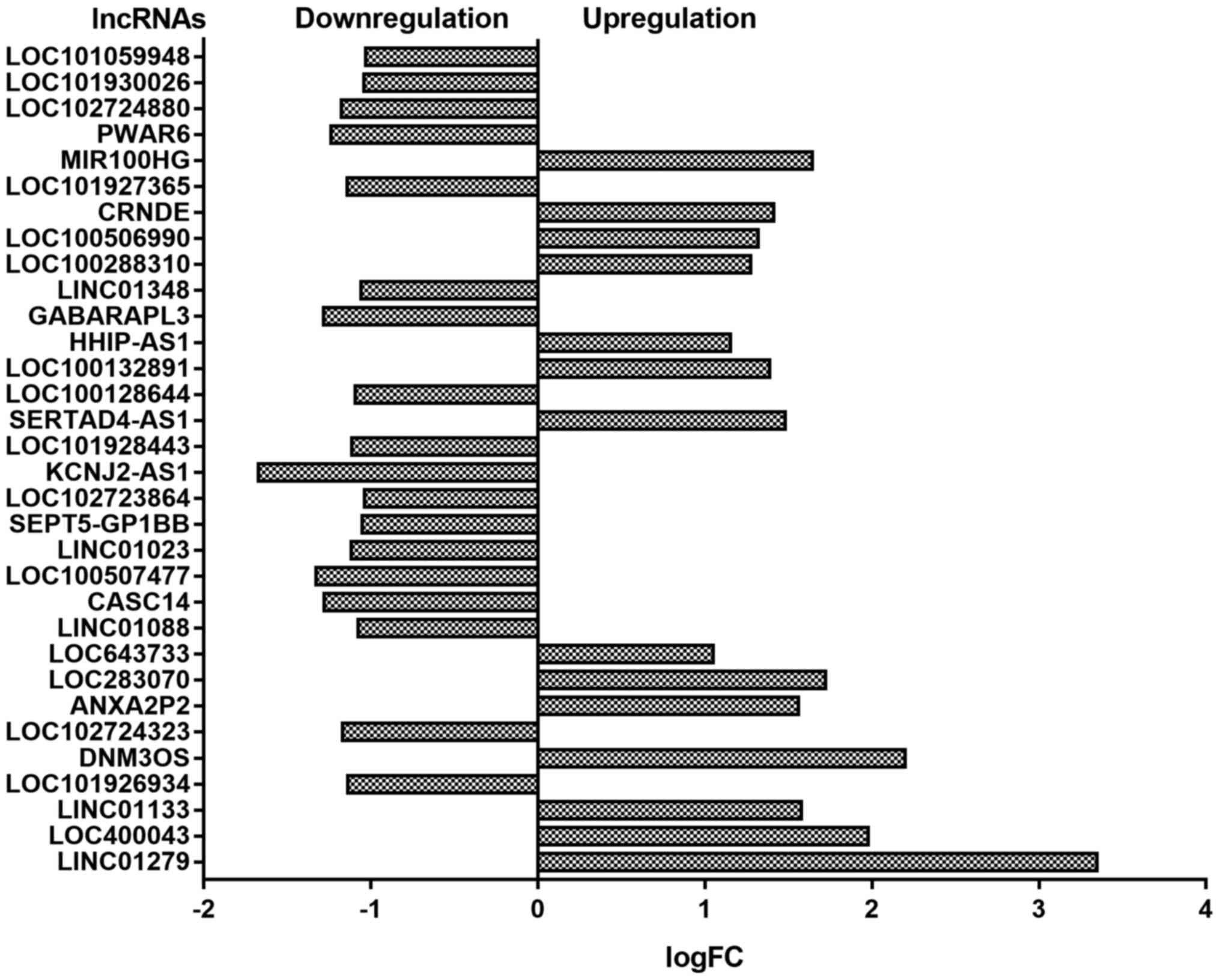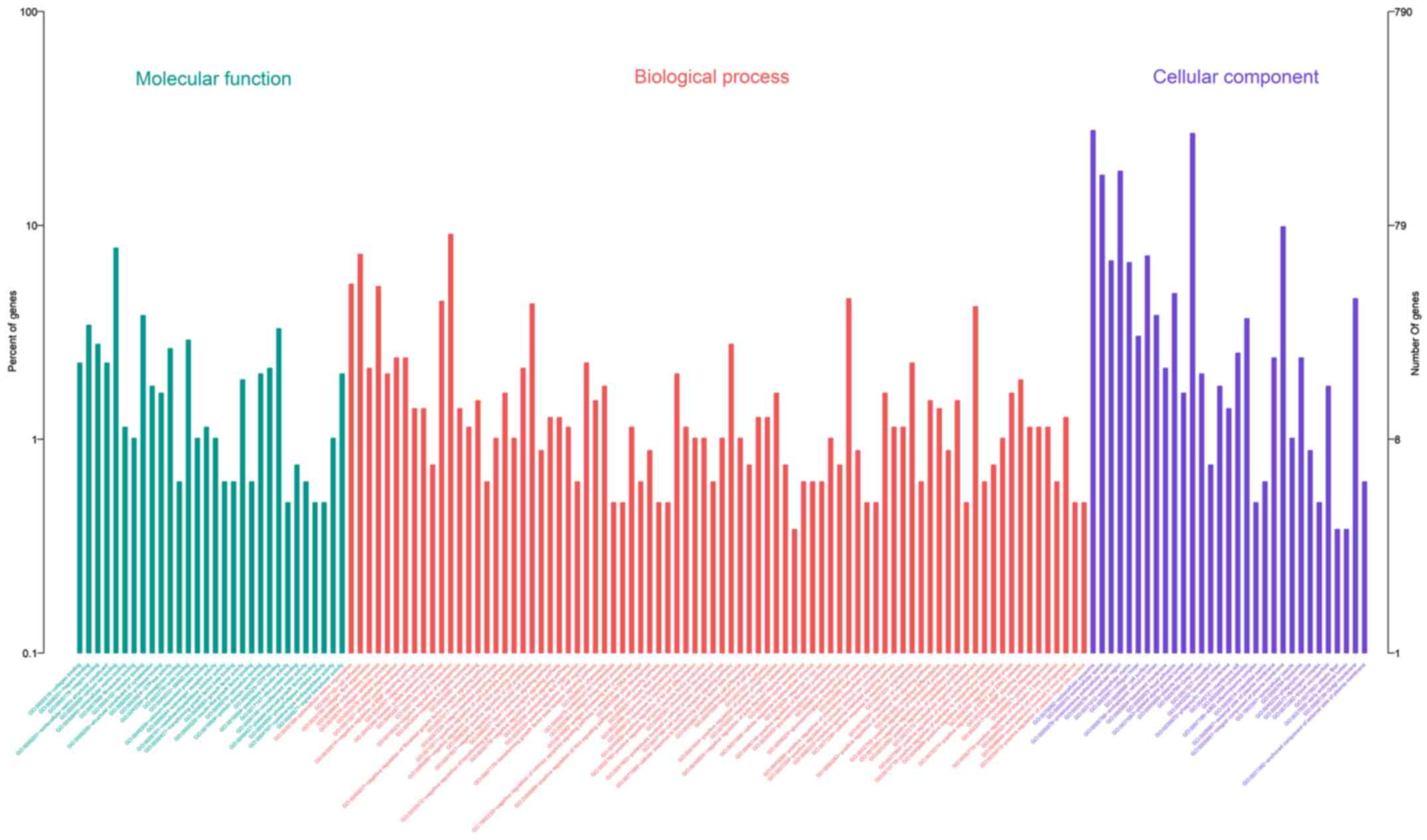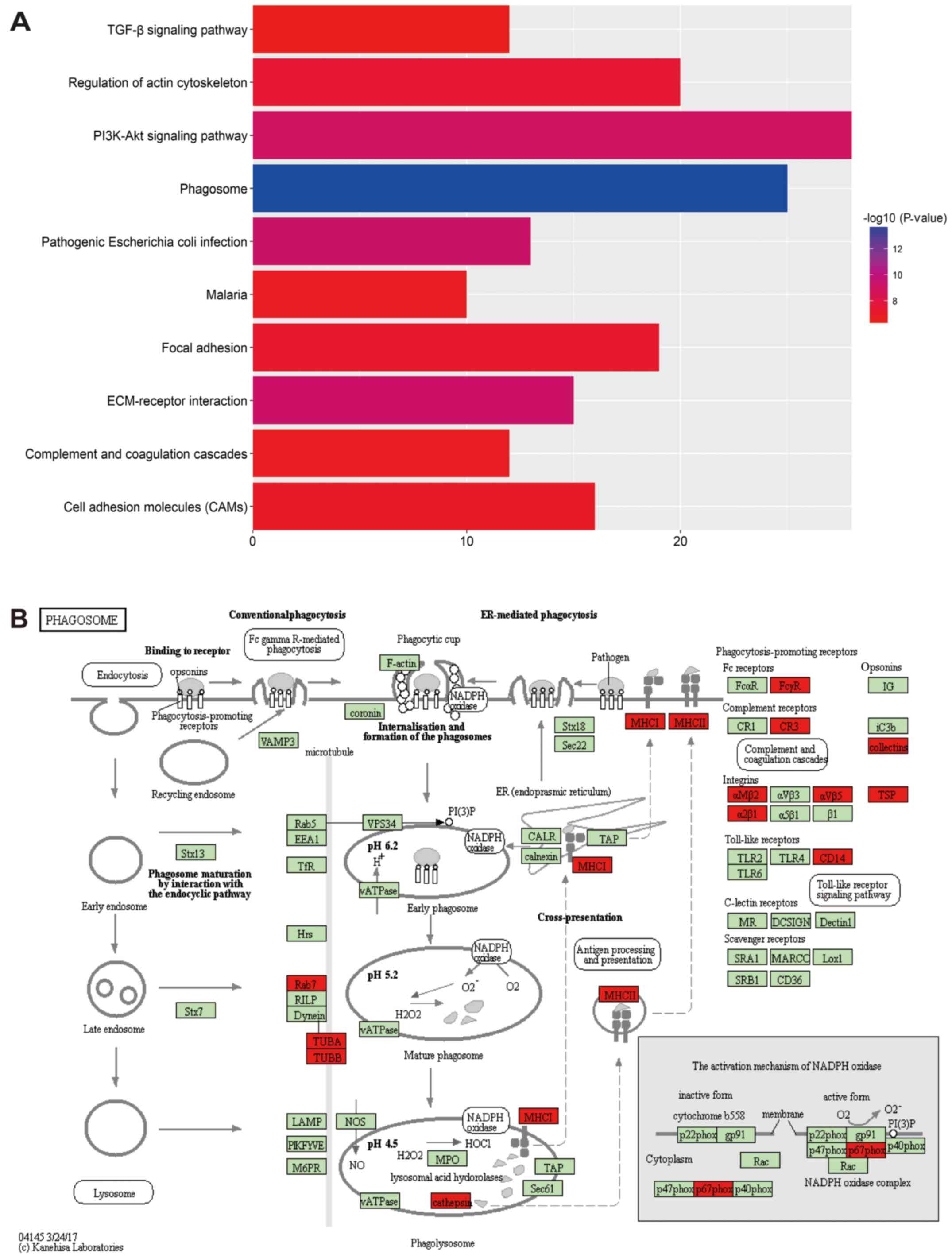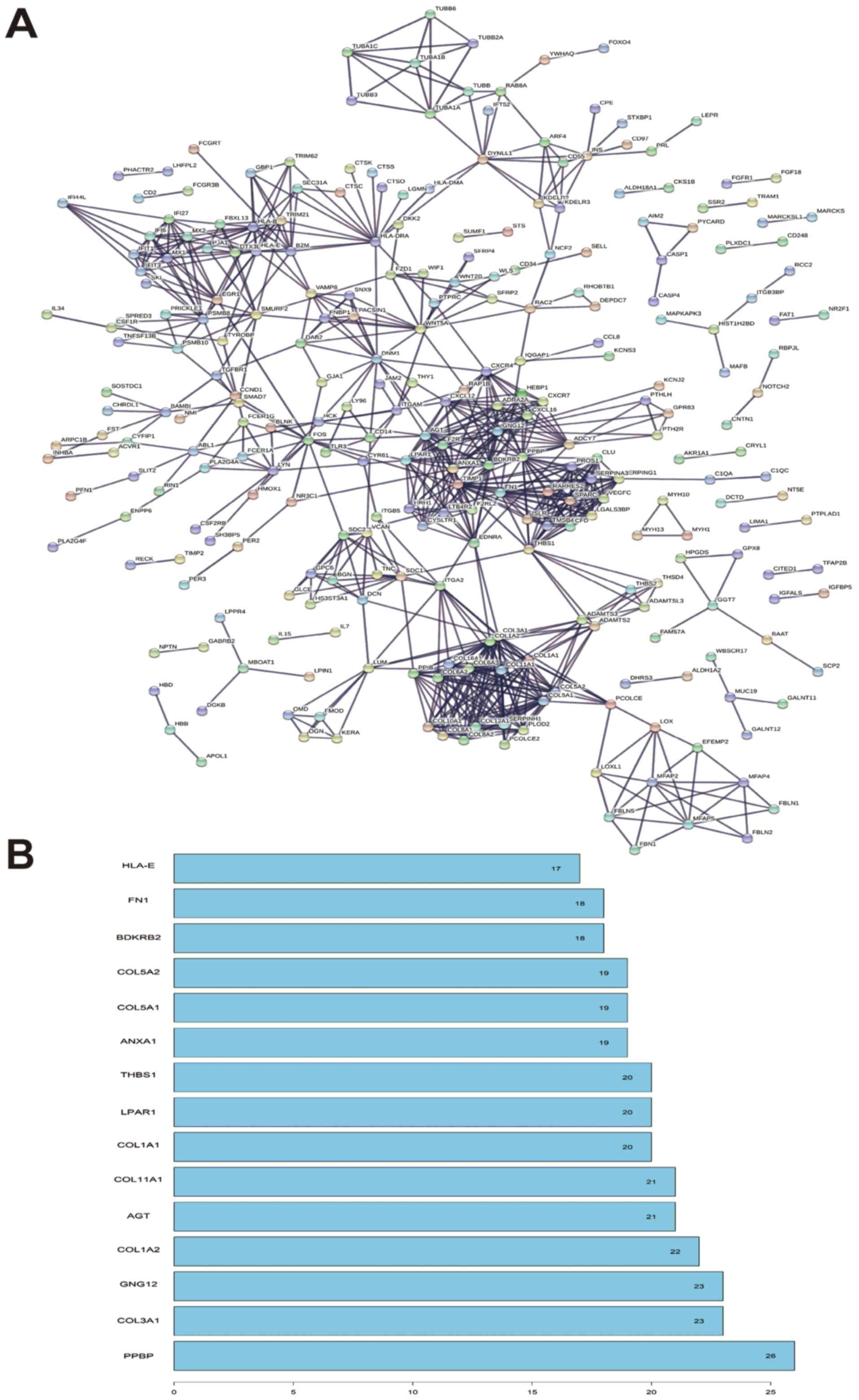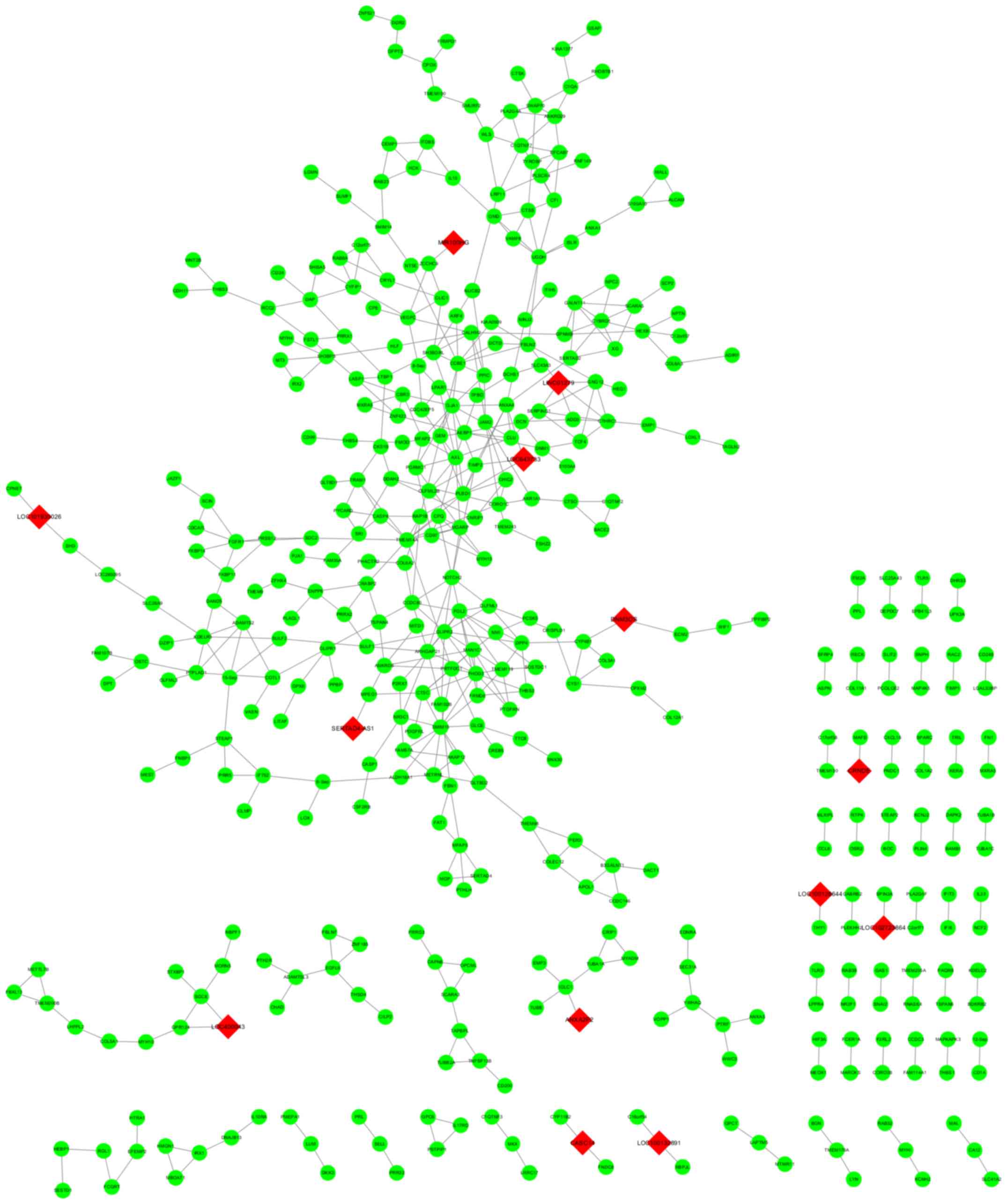|
1
|
Lambert SR: Population-based incidence of
strabismus: Why is it important? JAMA Ophthalmol. 135:1053–1054.
2017. View Article : Google Scholar : PubMed/NCBI
|
|
2
|
Shapira Y, Machluf Y, Mimouni M, Chaiter Y
and Mezer E: Amblyopia and strabismus: Trends in prevalence and
risk factors among young adults in Israel. Br J Ophthalmol.
2017.doi: 10.1136/bjophthalmol-2017-310364. PubMed/NCBI
|
|
3
|
Nelson LB: Macular changes following
strabismus surgery confirmed by the use of optical coherence
tomography. J Pediatr Ophthalmol Strabismus. 53:102016. View Article : Google Scholar : PubMed/NCBI
|
|
4
|
Lindstrom M, Tjust AE and Domellof Pedrosa
F: Pax7-positive cells/satellite cells in human extraocular
muscles. Invest Ophthalmol Vis Sci. 56:6132–6143. 2015. View Article : Google Scholar : PubMed/NCBI
|
|
5
|
Gong HM, Wang J, Xu J, Zhou ZY, Li JW and
Chen SF: Identification of rare paired box 3 variant in strabismus
by whole exome sequencing. Int J Ophthalmol. 10:1223–1228.
2017.PubMed/NCBI
|
|
6
|
Altick AL, Feng CY, Schlauch K, Johnson LA
and von Bartheld CS: Differences in gene expression between
strabismic and normal human extraocular muscles. Invest Ophthalmol
Vis Sci. 53:5168–5177. 2012. View Article : Google Scholar : PubMed/NCBI
|
|
7
|
Wang H, Huo X, Yang XR, He J, Cheng L,
Wang N, Deng X, Jin H, Wang N, Wang C, et al: STAT3-mediated
upregulation of lncRNA HOXD-AS1 as a ceRNA facilitates liver cancer
metastasis by regulating SOX4. Mol Cancer. 16:1362017. View Article : Google Scholar : PubMed/NCBI
|
|
8
|
Akhade VS, Pal D and Kanduri C: Long
noncoding RNA: Genome organization and mechanism of action. Adv Exp
Med Biol. 1008:47–74. 2017. View Article : Google Scholar : PubMed/NCBI
|
|
9
|
Aubert G, Strauss KA, Lansdorp PM and
Rider NL: Defects in lymphocyte telomere homeostasis contribute to
cellular immune phenotype in patients with cartilage-hair
hypoplasia. J Allergy Clin Immunol. 140:1120–1129.e1. 2017.
View Article : Google Scholar : PubMed/NCBI
|
|
10
|
Li Y, Xu F, Xiao H and Han F: Long
noncoding RNA BDNF-AS inversely regulated BDNF and modulated
high-glucose induced apoptosis in human retinal pigment epithelial
cells. J Cell Biochem. 119:817–823. 2018. View Article : Google Scholar : PubMed/NCBI
|
|
11
|
Zhu W, Meng YF, Xing Q, Tao JJ, Lu J and
Wu Y: Identification of lncRNAs involved in biological regulation
in early age-related macular degeneration. Int J Nanomedicine.
12:7589–7602. 2017. View Article : Google Scholar : PubMed/NCBI
|
|
12
|
Ye Z, Li Z and He S: Long noncoding RNA
associated competing endogenous RNAs are induced by clusterin in
retinal pigment epithelial cells. Mol Med Rep. 16:8399–8405. 2017.
View Article : Google Scholar : PubMed/NCBI
|
|
13
|
Dennis G Jr, Sherman BT, Hosack DA, Yang
J, Gao W, Lane HC and Lempicki RA: DAVID: Database for annotation,
visualization and integrated discovery. Genome Biol. 4:P32003.
View Article : Google Scholar : PubMed/NCBI
|
|
14
|
Kanehisa M, Sato Y, Kawashima M, Furumichi
M and Tanabe M: KEGG as a reference resource for gene and protein
annotation. Nucleic Acids Res. 44:D457–D462. 2016. View Article : Google Scholar : PubMed/NCBI
|
|
15
|
von Mering C, Huynen M, Jaeggi D, Schmidt
S, Bork P and Snel B: STRING: A database of predicted functional
associations between proteins. Nucleic Acids Res. 31:258–261. 2003.
View Article : Google Scholar : PubMed/NCBI
|
|
16
|
Franz M, Lopes CT, Huck G, Dong Y, Sumer O
and Bader GD: Cytoscape.js: A graph theory library for
visualisation and analysis. Bioinformatics. 32:309–311.
2016.PubMed/NCBI
|
|
17
|
Langfelder P and Horvath S: WGCNA: An R
package for weighted correlation network analysis. BMC
Bioinformatics. 9:5592008. View Article : Google Scholar : PubMed/NCBI
|
|
18
|
Ye XC, Pegado V, Patel MS and Wasserman
WW: Strabismus genetics across a spectrum of eye misalignment
disorders. Clin Genet. 86:103–111. 2014. View Article : Google Scholar : PubMed/NCBI
|
|
19
|
Lueder GT: Orbital causes of incomitant
strabismus. Middle East Afr J Ophthalmol. 22:286–291. 2015.
View Article : Google Scholar : PubMed/NCBI
|
|
20
|
Min X, Fan H, Zhao G and Liu G:
Identification of 2 potentially relevant gene mutations involved in
strabismus using whole-exome sequencing. Med Sci Monit.
23:1719–1724. 2017. View Article : Google Scholar : PubMed/NCBI
|
|
21
|
Rajab GZ, Suh SY and Demer JL: Magnetic
resonance imaging in dissociated strabismus complex demonstrates
generalized hypertrophy of rectus extraocular muscles. J AAPOS.
21:205–209. 2017. View Article : Google Scholar : PubMed/NCBI
|
|
22
|
Haider AS: Unilateral internuclear
ophthalmoplegia, strabismus and transient torsional nystagmus in
focal pontine infarction. BMJ Case Rep. 2016:bcr20162165032016.
View Article : Google Scholar : PubMed/NCBI
|
|
23
|
Agarwal AB, Feng CY, Altick AL, Quilici
DR, Wen D, Johnson LA and von Bartheld CS: Altered protein
composition and gene expression in strabismic human extraocular
muscles and tendons. Invest Ophthalmol Vis Sci. 57:5576–5585. 2016.
View Article : Google Scholar : PubMed/NCBI
|
|
24
|
Schwalm S, Beyer S, Frey H, Haceni R,
Grammatikos G, Thomas D, Geisslinger G, Schaefer L, Huwiler A and
Pfeilschifter J: Sphingosine kinase-2 deficiency ameliorates kidney
fibrosis by up-regulating Smad7 in a mouse model of unilateral
ureteral obstruction. Am J Pathol. 187:2413–2429. 2017. View Article : Google Scholar : PubMed/NCBI
|
|
25
|
Saika S, Yamanaka O, Okada Y, Tanaka S,
Miyamoto T, Sumioka T, Kitano A, Shirai K and Ikeda K: TGF beta in
fibroproliferative diseases in the eye. Front Biosci (Schol Ed).
1:376–390. 2009. View
Article : Google Scholar : PubMed/NCBI
|
|
26
|
Choi SU, Kim KW and Moon NJ: Effective
treatment for prevention of post-operative adhesion after
strabismus surgery in experimental rabbit model: 0.5% tranilast
ophthalmic solution. BMC Ophthalmol. 16:1662016. View Article : Google Scholar : PubMed/NCBI
|
|
27
|
Mahan M and Engel JM: The resurgence of
botulinum toxin injection for strabismus in children. Curr Opin
Ophthalmol. 28:460–464. 2017. View Article : Google Scholar : PubMed/NCBI
|
|
28
|
McLoon LK, Christiansen SP, Ghose GM, Das
VE and Mustari MJ: Improvement of eye alignment in adult strabismic
monkeys by sustained IGF-1 treatment. Invest Ophthalmol Vis Sci.
57:6070–6078. 2016. View Article : Google Scholar : PubMed/NCBI
|
|
29
|
Levin R, Grinstein S and Canton J: The
life cycle of phagosomes: Formation, maturation and resolution.
Immunol Rev. 273:156–179. 2016. View Article : Google Scholar : PubMed/NCBI
|
|
30
|
Steinhauser C, Dallenga T, Tchikov V,
Schaible UE, Schutze S and Reiling N: Immunomagnetic isolation of
pathogen-containing phagosomes and apoptotic blebs from primary
phagocytes. Curr Protoc Immunol. 105:14.36.1–26. 2014. View Article : Google Scholar
|
|
31
|
Russell DG: Phagosomes, fatty acids and
tuberculosis. Nat Cell Biol. 5:776–778. 2003. View Article : Google Scholar : PubMed/NCBI
|
|
32
|
Jiang M, Esteve-Rudd J, Lopes VS, Diemer
T, Lillo C, Rump A and Williams DS: Microtubule motors transport
phagosomes in the RPE and lack of KLC1 leads to AMD-like
pathogenesis. J Cell Biol. 210:595–611. 2015. View Article : Google Scholar : PubMed/NCBI
|
|
33
|
Chen YG, Satpathy AT and Chang HY: Gene
regulation in the immune system by long noncoding RNAs. Nat
Immunol. 18:962–972. 2017. View
Article : Google Scholar : PubMed/NCBI
|
|
34
|
Zheng Y, Liu L and Shukla GC: A
comprehensive review of web-based non-coding RNA resources for
cancer research. Cancer Lett. 407:1–5. 2017. View Article : Google Scholar : PubMed/NCBI
|
|
35
|
Jarroux J, Morillon A and Pinskaya M:
History, discovery and classification of lncRNAs. Adv Exp Med Biol.
1008:1–46. 2017. View Article : Google Scholar : PubMed/NCBI
|
|
36
|
Wan P, Su W and Zhuo Y: Precise long
non-coding RNA modulation in visual maintenance and impairment. J
Med Genet. 54:450–459. 2017. View Article : Google Scholar : PubMed/NCBI
|
|
37
|
Liu J, Ding X, Yuan L and Zhang X:
Identification of pterygium-related long non-coding RNAs and
expression profiling by microarray analysis. Int J Mol Med.
38:529–536. 2016. View Article : Google Scholar : PubMed/NCBI
|
|
38
|
Li F, Wen X, Zhang H and Fan X: Novel
insights into the role of long noncoding RNA in ocular diseases.
Int J Mol Sci. 17:4782016. View Article : Google Scholar : PubMed/NCBI
|
|
39
|
Gong C, Li Z, Ramanujan K, Clay I, Zhang
Y, Lemire-Brachat S and Glass DJ: A long non-coding RNA, LncMyoD,
regulates skeletal muscle differentiation by blocking IMP2-mediated
mRNA translation. Dev Cell. 34:181–191. 2015. View Article : Google Scholar : PubMed/NCBI
|
|
40
|
Antunes-Foschini RS, Miyashita D, Bicas HE
and McLoon LK: Activated satellite cells in medial rectus muscles
of patients with strabismus. Invest Ophthalmol Vis Sci. 49:215–220.
2008. View Article : Google Scholar : PubMed/NCBI
|
|
41
|
Jin CF, Li Y, Ding XB, Li X, Zhang LL, Liu
XF and Guo H: lnc133b, a novel, long non-coding RNA, regulates
bovine skeletal muscle satellite cell proliferation and
differentiation by mediating miR-133b. Gene. 630:35–43. 2017.
View Article : Google Scholar : PubMed/NCBI
|
|
42
|
Tang R, Zhang G, Wang YC, Mei X and Chen
SY: The long non-coding RNA GAS5 regulates transforming growth
factor beta (TGF-beta)-induced smooth muscle cell differentiation
via RNA Smad-binding elements. J Biol Chem. 292:14270–14278. 2017.
View Article : Google Scholar : PubMed/NCBI
|



